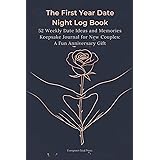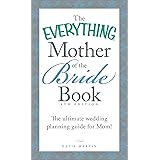Every wedding day presents a unique tapestry of emotions, moments, and, inevitably, challenges. Imagine embarking on your first wedding photography assignment, equipped with enthusiasm but perhaps lacking the seasoned wisdom that only hundreds of events can impart. This scenario resonates deeply with many emerging professionals who quickly learn that raw talent must be paired with strategic preparation and adaptability. The accompanying video provides a rare glimpse into the comprehensive approach of a photographer who has successfully navigated over 1000 weddings, offering invaluable insights into managing the complexities of a real wedding day.
For those aspiring to excel in professional wedding photography, observing an expert like Taylor Jackson in action provides a foundational learning experience. His practical philosophy, honed over years, emphasizes efficiency, thoughtful gear selection, and creative problem-solving on the spot. This comprehensive guide aims to elaborate on the critical strategies and technical considerations discussed in the video, further equipping you with the knowledge to approach each wedding day with confidence and artistry. By understanding the intricacies of gear, lighting, and workflow, photographers can consistently deliver exceptional results for their clients.
Essential Wedding Photography Gear & Strategic Packing
Efficient gear management is paramount for any wedding photographer striving to maintain agility throughout a demanding day. The “single bag” philosophy, championed in the video, illustrates a pragmatic approach to carrying only essential equipment, thereby minimizing bulk and maximizing mobility. This method ensures that a photographer remains unobtrusive while still possessing the necessary tools to capture every crucial moment. Adopting a streamlined kit fosters quicker reaction times and reduces the physical strain associated with long hours of shooting.
Central to Taylor’s setup are the robust Nikon Z63 and Nikon Z52 camera bodies, chosen for their reliability and performance in varying conditions. These mirrorless systems offer advanced autofocus capabilities and excellent low-light performance, critical features for wedding environments. The selection of lenses is equally deliberate, beginning with the versatile 50mm f1.2, renowned for its stunning shallow depth of field and creamy bokeh. Furthermore, the 24mm 1.8S provides a wider perspective, ideal for capturing environmental portraits and dynamic group shots, establishing a solid foundation for diverse photographic needs.
Moreover, the Tamron 35-150mm f2-2.8 zoom lens stands out as a strategic choice for its exceptional versatility, especially during the ceremony where movement is restricted. This lens allows for a broad range of focal lengths without requiring a lens change, ensuring that no moment is missed due to equipment adjustments. While prime lenses offer superior light gathering and distinct aesthetics, a high-quality zoom lens provides indispensable flexibility, a crucial advantage for photographers undertaking their first few wedding days. For instance, knowing the flow of the day is often unclear initially, a zoom lens helps capture diverse shots without constant repositioning.
Integrating film photography into a digital workflow adds a unique artistic dimension, as demonstrated by the use of the Contax T2 with Portra 800 film. This vintage point-and-shoot camera, despite its increased market value due to celebrity endorsement, offers a distinct aesthetic that complements digital captures beautifully. Limiting its use to one or two rolls per wedding prevents it from becoming an overwhelming distraction, balancing artistic expression with practical logistical considerations. Consequently, photographers can offer clients a rich, tactile element alongside their digital galleries, enhancing the overall experience.
Mastering Light and Composition with Precision
Achieving a professional look often hinges on adept control over light and composition, especially when environmental conditions are less than ideal. The deliberate use of a shallow depth of field is a cornerstone technique, transforming distracting backgrounds—such as the “stick season” landscape or a cluttered hotel room—into elegantly blurred, complementary elements. This technique effectively isolates the subjects, drawing the viewer’s eye directly to the couple and ensuring a polished, refined aesthetic regardless of the surroundings. This artistic choice elevates ordinary scenes into visually captivating images.
Illumination strategy is another critical component, with bounce flash being a preferred method for creating soft, flattering light. The Godox V100, equipped with a unique front-facing attachment, exemplifies an innovative approach to flash photography. By bouncing the main flash output off a ceiling or wall, a broad, diffused light source is created, mimicking natural light. Simultaneously, the forward-facing fill flash provides subtle light directly onto the subject, crucial for creating desirable catchlights in the eyes and preventing a “zombie movie” effect often seen with purely bounced light. This dual-action approach ensures subjects are beautifully lit from all angles, adding dimension and vibrancy to portraits.
When incorporating new technology or gear, a measured approach is always recommended to ensure consistent results. As suggested, photographers should “pepper it in slowly” rather than adopting entirely new techniques on a critical wedding day. This allows for experimentation and refinement in lower-stakes environments, guaranteeing that the new tool or method aligns with one’s artistic vision before full deployment. This cautious integration mitigates risks, ensuring that the desired photographic look is consistently achieved without unexpected technical hurdles during a client event.
Navigating the Dynamic Wedding Day Workflow
Understanding and adapting to the dynamic flow of a wedding day is essential for comprehensive coverage and a stress-free experience. While a typical timeline might involve getting-ready photos, a ceremony, and a reception, unforeseen changes are an inherent part of the event. A professional wedding photographer must cultivate mental agility and preparedness for spontaneous adjustments, such as unexpected “first look” moments or shifts in venue availability. This flexibility ensures that every significant event is captured seamlessly, regardless of minor deviations from the initial plan.
The physical demands of wedding photography are also considerable; a typical wedding day can involve upwards of 10,000 steps, highlighting the necessity for comfortable attire and efficient movement. Beyond the physical exertion, constant interaction with the couple, wedding party, and venue staff requires strong interpersonal skills. Effective communication and a friendly demeanor contribute significantly to a harmonious environment, fostering trust and enabling the capture of authentic, joyful moments. Ultimately, the photographer acts as a calm and reassuring presence amidst the day’s excitement.
Cultivating a Thriving Wedding Photography Business
Building a successful career in wedding photography extends beyond technical prowess; it fundamentally involves strategic business development and continuous personal growth. The adage “be everywhere all at once” underscores the importance of pervasive visibility and networking within the industry. This means engaging actively on social media, maintaining an updated professional website, participating in local vendor events, and fostering strong relationships with other wedding professionals. Consistent presence and reputation building are vital for attracting new clients and securing bookings.
Moreover, continuous learning and adaptation are crucial in a rapidly evolving photographic landscape. Staying current with new camera technologies, lighting techniques, and post-processing software ensures that a photographer remains competitive and relevant. Learning from experienced professionals, like Taylor Jackson, provides invaluable shortcuts and deeper understandings that might take years to acquire independently. Embracing new challenges and refining one’s craft are ongoing processes that define a long-term, successful career in wedding photography.
Hone Your Skills: Q&A with Our 1000-Wedding Photography Master
What is this wedding photography tutorial about?
This tutorial offers insights from experienced photographer Taylor Jackson, covering his workflow, gear choices, and essential tips for photographing a real wedding day. It helps aspiring wedding photographers learn practical strategies for efficiency and problem-solving.
What kind of camera gear is important for wedding photography?
Professional wedding photographers often use reliable camera bodies like the Nikon Z63 or Z52, along with versatile lenses such as a 50mm f1.2, 24mm 1.8S, and a zoom lens like the Tamron 35-150mm. Many also adopt a ‘single bag’ philosophy to keep gear minimal and maintain mobility.
How do wedding photographers manage lighting to get good photos?
They often use techniques like shallow depth of field to make subjects stand out by blurring backgrounds, and bounce flash for soft, flattering light. Bounce flash, with tools like the Godox V100, mimics natural light by reflecting off ceilings or walls.
What should a beginner photographer know about working on a wedding day?
A wedding day requires flexibility and adaptability, as timelines can change unexpectedly. It’s also important to be physically prepared for long hours and to have good communication skills for interacting with the couple and guests.











